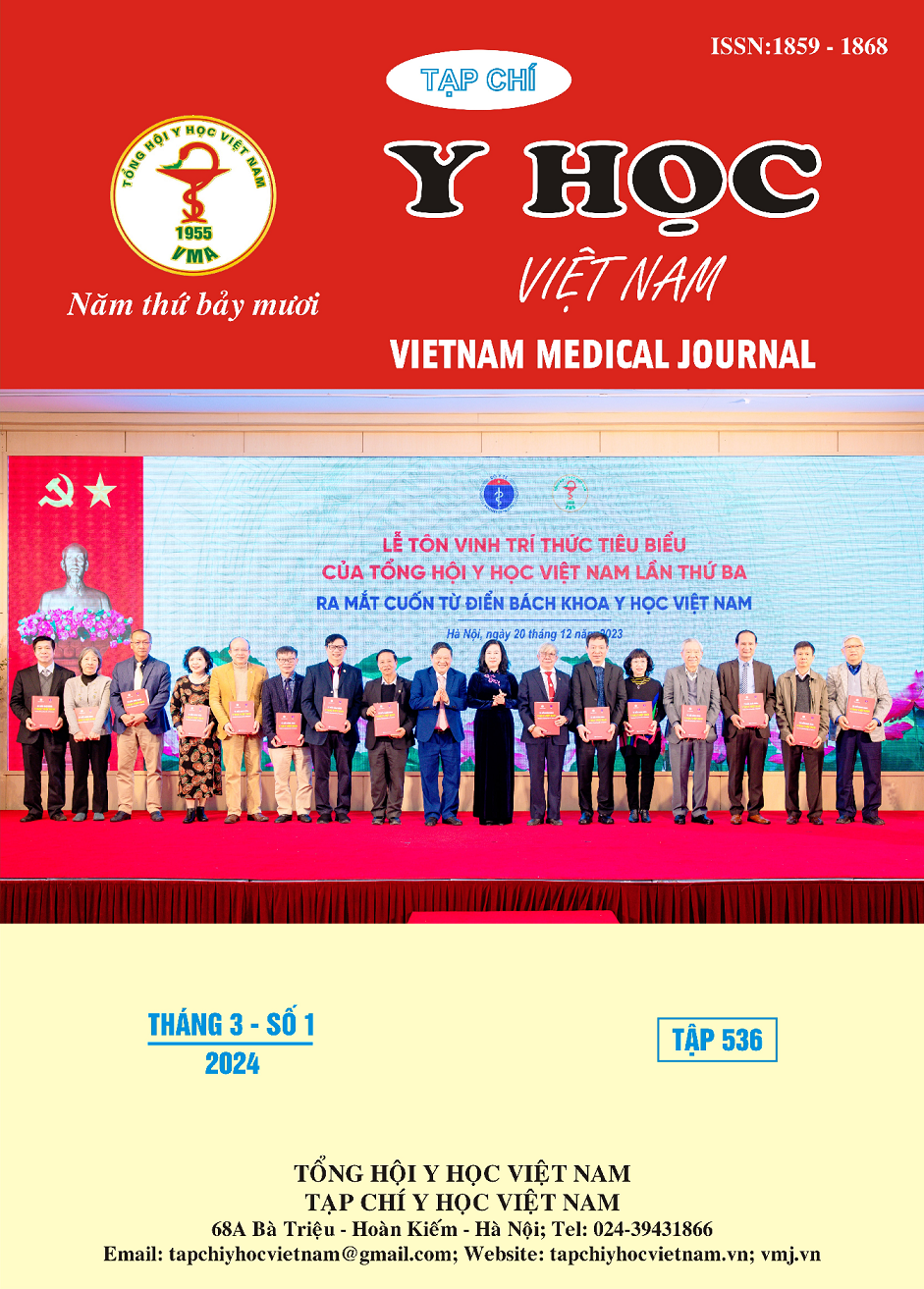MORPHOLOGICAL FEATURES, SIZE AND BRANCHING PATTERNS OF THE ABDOMINAL AORTA ON MULTI – DETECTOR COMPUTED TOMOGRAPHY IN ADULTS
Main Article Content
Abstract
Background: Our aim is to investigate the morphological features and size of the abdominal aorta in order to provide the most accurate average data for the Vietnamese population, thereby establishing a basis for diagnosing and treating abdominal aortic aneurysms in our country. Subjects and Methods: A retrospective, cross-sectional study was conducted from November 2021 to May 2022. All patients who underwent contrast-enhanced computed tomography (CT) of the abdomen at Binh Dan Hospital, Ho Chi Minh City, were included according to the sample selection criteria. Results: A total of 579 patients were included, with a mean age of 54.7 ± 14.8. The male-to-female ratio was 1.27:1. The mean length of the abdominal aorta in Vietnamese individuals was 103.9 ± 17.6 mm. The mean diameter of the abdominal aorta was 17.5 ± 3.1 mm. The abdominal aorta gradually tapers in diameter (conical shape) as follows: - Transverse diameter at the organ level: 19.7 ± 2.9 mm. - Transverse diameter at the renal artery level: 18.7 ± 3.0 mm. - Diameter below the renal arteries: 16.7 ± 3.4 mm. The mean diameter of the abdominal aorta in males was 18 ± 3.4 mm, which was larger than in females (16.8 ± 2.6 mm). The diameter of the abdominal aorta increases from the 18-30 age group (15.1 mm) to the >90 age group (21.3 mm). Conclusion: Based on the research results, we propose certain definitions for abdominal aortic aneurysms in the Vietnamese population. Furthermore, understanding the diameter measurements of the branches of the abdominal aorta can aid in selecting appropriate grafts for different patient groups. Additionally, the study also notes variations in the origin of the main branches of the abdominal aorta.
Article Details
References
2. Iezzi R, Cotroneo A R, Giancristofaro D, Santoro M, et al, (2008), "Multidetector-row CT angiographic imaging of the celiac trunk: anatomy and normal variants", Surgical and Radiologic Anatomy, 30 (4), pp. 303-310.
3. Joh J H, Ahn H-J, Park H-C J Y m j, (2013), "Reference diameters of the abdominal aorta and iliac arteries in the Korean population", 54 (1), pp. 48-54.
4. Kim T H, Jang H J, Choi Y J, Lee C K, et al, (2017), "Kilt Technique as an Angle Modification Method for Endovascular Repair of Abdominal Aortic Aneurysm with Severe Neck Angle", Ann Thorac Cardiovasc Surg, 23 (2), pp. 96-103.
5. Kornafel O, Baran B, Pawlikowska I, Laszczyński P, et al, (2010), "Analysis of anatomical variations of the main arteries branching from the abdominal aorta, with 64-detector computed tomography", 75 (2), pp.
6. Sakalihasan N, Limet R, Defawe O D, (2005), "Abdominal aortic aneurysm", The Lancet, 365 (9470), pp. 1577-1589.
7. Sidawy A P, Perler B A, (2022), Rutherford's Vascular Surgery and Endovascular Therapy, 2-Volume Set, E-Book, Elsevier Health Sciences, pp.
8. Wang X, Zhao W-j, Shen Y, Zhang R-l, (2020), "Normal Diameter and Growth Rate of Infrarenal Aorta and Common Iliac Artery in Chinese Population Measured by Contrast-Enhanced Computed Tomography", Annals of Vascular Surgery, 62 pp. 238-247.


